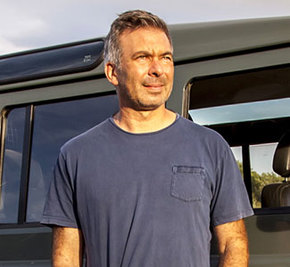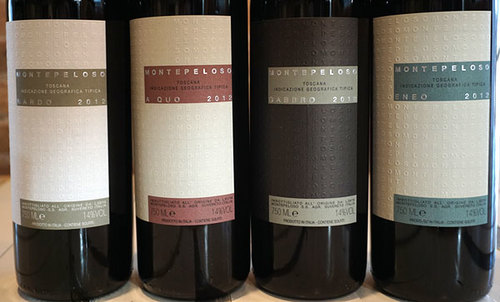| « Previous | News | Next » |
March 16, 2016
Montepeloso - In the Ranks of the Elite

The tale of the Super Tuscan is one for the storybooks: iconoclast winemakers reinvigorated Tuscany’s winemaking in the seventies, breathing new life and new international interest into a market that was floundering from straw-covered, mediocre, mass-produced Chianti. In 1968, Marquis Mario Rocchetta’s Tenuta San Guido released ‘Sassicaia,’ essentially inventing the category by eschewing the DOC laws, introducing French grapes to the blend, and claiming the less prestigious “table wine” designation as a badge of honor. When Piero Antinori released ‘Tignanello’ in 1971, this tinkering in Tuscany became a bona fide movement.
Several decades in, Super Tuscan winemakers still have that experimental spirit, but the new wave has shifted focus from grapes to terroir. Maremma, the coastal region west of Chianti, is ground zero. It’s come to be called Tuscany’s “Gold Coast,” as well as the “Etruscan Riviera.” Though much of it was covered by impenetrable swampland until Mussolini drained it in the 1930s, today it’s vinous paradise. It’s one of the warmer climates in Tuscany, but with a coastal influence and sloping hillsides, making it very hospitable to the vine. According to Wine Spectator: “It’s similar to that of Sicily, but less severe, which makes it more manageable for a wine producer. The sun gives soft tannins, and this is what the modern consumer is looking for. But the softness here is a product of the vineyard, not the winery.” (10/2006) ‘Sassicaia’ was born in the Maremma commune of Bolgheri, and achieved such notoriety that the monopole of Bolgheri Sassicaia was designated. But it’s Suvereto, in the south, that is currently garnering attention.
 Swiss-Italian historian Fabio Chiarelotto recognized Suvereto’s potential and purchased the Neukom estate in 1998, well before the region was elevated to DOCG status in 2011. He renamed the estate Montepeloso and worked to completely overhaul the vineyards. Planted on a gentle hillside of chalky gravel and clay, with warm, windy days, his vineyards produce supple, sumptuous, and aromatic wines. In a word: sexy. 2006 marked the beginning of the estate’s “mature phase,” when the effects of regrafting and retraining his vines really came to fruition. The estate has been championed by critics and drinkers alike, especially Antonio Galloni, who predicted in 2014 that “Montepeloso will soon join the ranks of the elite, if it hasn’t already.” The fact that Chiarelotto only produces small lots of each wine adds to the cult status he’s building.
Swiss-Italian historian Fabio Chiarelotto recognized Suvereto’s potential and purchased the Neukom estate in 1998, well before the region was elevated to DOCG status in 2011. He renamed the estate Montepeloso and worked to completely overhaul the vineyards. Planted on a gentle hillside of chalky gravel and clay, with warm, windy days, his vineyards produce supple, sumptuous, and aromatic wines. In a word: sexy. 2006 marked the beginning of the estate’s “mature phase,” when the effects of regrafting and retraining his vines really came to fruition. The estate has been championed by critics and drinkers alike, especially Antonio Galloni, who predicted in 2014 that “Montepeloso will soon join the ranks of the elite, if it hasn’t already.” The fact that Chiarelotto only produces small lots of each wine adds to the cult status he’s building.
He makes four cuvées. ‘Nardo’ (Tuscan dialect for lavender) is an unfiltered blend of mostly Sangiovese, with Montepulciano and Cabernet Sauvignon rounding out the mix. He never makes more than 400 cases a year. ‘Gabbro’ is his ode to Cabernet Sauvignon, and it truly shows the heights that Cab can achieve in this terroir. It’s 100 percent Cab from 35 year old vines, and he only makes 200 cases. James Suckling placed Gabbro on this top 100 list for 2014. ‘Eneo’ is his Sangiovese-based entry level wine, with Colorino and Merlot; ‘A Quo’ is a blend of Cabernet Sauvignon, Montepulciano, Sangiovese, Marselan, and Alicante Bouschet. The common thread among these cuvées is that each achieves a finesse that belies its opulence; the wines have an intriguing yin yang that appeals to both intellect and an unbridled sense of hedonism. And the exciting part? This is just the beginning for Montepeloso. Slowly and steadily, Chiarelotto is building a ground swell, and the wines will knock you out.

